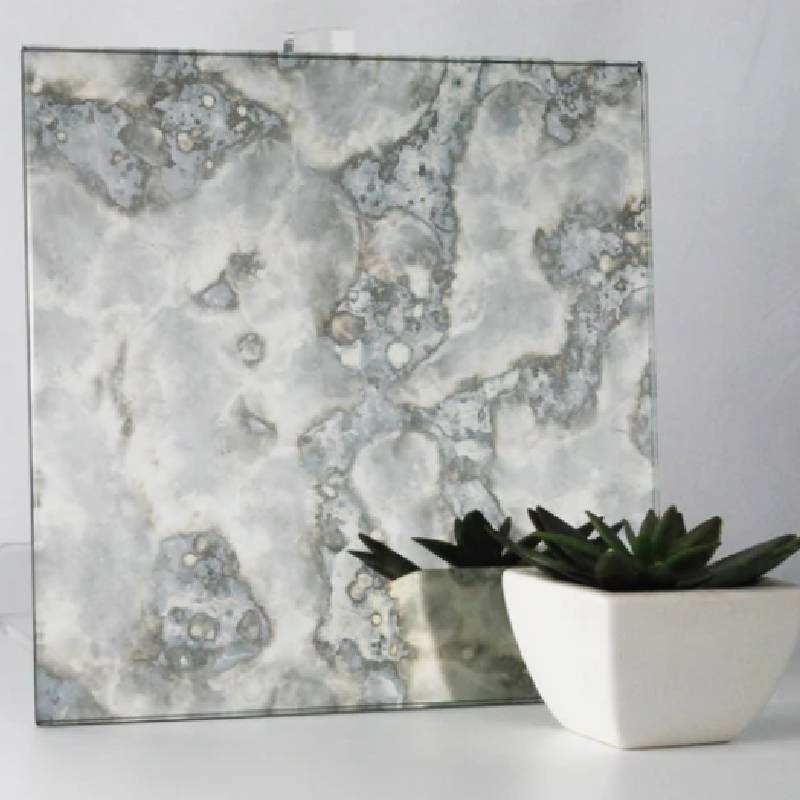Architectural glazing products have emerged as an essential element in modern construction and design, transforming the way buildings interact with light, energy efficiency, and aesthetics. These innovative solutions are not just about glass; they represent a harmonious blend of functionality, durability, and artistic expression.
Architectural glazing refers to the use of glass in building construction for various purposes, including windows, doors, facades, and interior partitions. It has evolved from being a mere transparent barrier to a sophisticated system that enhances a structure's performance and visual appeal. The range of architectural glazing products is vast, catering to diverse needs and preferences.
One prominent product is insulated glazing, commonly known as double or triple glazed windows. These units provide superior thermal insulation, reducing energy consumption by minimizing heat loss in cold climates and preventing heat gain in warmer ones. They also contribute to noise reduction and improved security.
Another innovation is laminated glass, which consists of two or more glass panes bonded together with a plastic interlayer. This product offers enhanced safety and security, as it remains intact even when shattered. Laminated glass is often used in areas requiring sound control, blast resistance, or protection against UV radiation.
Tinted and coated glasses are also popular architectural glazing products. Tinted glass reduces solar heat gain, while reflective coatings reflect sunlight, thereby regulating indoor temperatures and reducing glare Tinted glass reduces solar heat gain, while reflective coatings reflect sunlight, thereby regulating indoor temperatures and reducing glare

Tinted glass reduces solar heat gain, while reflective coatings reflect sunlight, thereby regulating indoor temperatures and reducing glare Tinted glass reduces solar heat gain, while reflective coatings reflect sunlight, thereby regulating indoor temperatures and reducing glare
 architectural glazing products
architectural glazing products. Low-E (Low-Emissivity) coatings, on the other hand, allow natural light to enter while reflecting back unwanted heat, improving energy efficiency.
Frosted or patterned glass adds a touch of privacy and elegance to spaces without compromising light transmission. It is often used in bathrooms, conference rooms, or anywhere where transparency needs to be controlled.
Sustainable architectural glazing products, such as self-cleaning glass, are gaining traction. Coated with a photocatalytic material, this glass breaks down dirt particles upon exposure to sunlight, reducing the need for frequent cleaning.
In addition, structural glazing systems push the boundaries of design possibilities. These systems allow large, frameless glass panels, creating seamless views and a sense of openness. They are often used in contemporary architecture for their minimalist aesthetic and strength.
Architectural glazing products are not just about functionality; they are a testament to the evolving relationship between architecture and technology. As sustainability and energy efficiency become increasingly important, these products will continue to evolve, offering new possibilities for architects and designers to create buildings that are both beautiful and responsible. The future of architectural glazing promises an exciting blend of aesthetics, performance, and environmental consciousness, shaping the built environment for years to come.
 Afrikaans
Afrikaans  Albanian
Albanian  Amharic
Amharic  Arabic
Arabic  Armenian
Armenian  Azerbaijani
Azerbaijani  Basque
Basque  Belarusian
Belarusian  Bengali
Bengali  Bosnian
Bosnian  Bulgarian
Bulgarian  Catalan
Catalan  Cebuano
Cebuano  Corsican
Corsican  Croatian
Croatian  Czech
Czech  Danish
Danish  Dutch
Dutch  English
English  Esperanto
Esperanto  Estonian
Estonian  Finnish
Finnish  French
French  Frisian
Frisian  Galician
Galician  Georgian
Georgian  German
German  Greek
Greek  Gujarati
Gujarati  Haitian Creole
Haitian Creole  hausa
hausa  hawaiian
hawaiian  Hebrew
Hebrew  Hindi
Hindi  Miao
Miao  Hungarian
Hungarian  Icelandic
Icelandic  igbo
igbo  Indonesian
Indonesian  irish
irish  Italian
Italian  Japanese
Japanese  Javanese
Javanese  Kannada
Kannada  kazakh
kazakh  Khmer
Khmer  Rwandese
Rwandese  Korean
Korean  Kurdish
Kurdish  Kyrgyz
Kyrgyz  Lao
Lao  Latin
Latin  Latvian
Latvian  Lithuanian
Lithuanian  Luxembourgish
Luxembourgish  Macedonian
Macedonian  Malgashi
Malgashi  Malay
Malay  Malayalam
Malayalam  Maltese
Maltese  Maori
Maori  Marathi
Marathi  Mongolian
Mongolian  Myanmar
Myanmar  Nepali
Nepali  Norwegian
Norwegian  Norwegian
Norwegian  Occitan
Occitan  Pashto
Pashto  Persian
Persian  Polish
Polish  Portuguese
Portuguese  Punjabi
Punjabi  Romanian
Romanian  Russian
Russian  Samoan
Samoan  Scottish Gaelic
Scottish Gaelic  Serbian
Serbian  Sesotho
Sesotho  Shona
Shona  Sindhi
Sindhi  Sinhala
Sinhala  Slovak
Slovak  Slovenian
Slovenian  Somali
Somali  Spanish
Spanish  Sundanese
Sundanese  Swahili
Swahili  Swedish
Swedish  Tagalog
Tagalog  Tajik
Tajik  Tamil
Tamil  Tatar
Tatar  Telugu
Telugu  Thai
Thai  Turkish
Turkish  Turkmen
Turkmen  Ukrainian
Ukrainian  Urdu
Urdu  Uighur
Uighur  Uzbek
Uzbek  Vietnamese
Vietnamese  Welsh
Welsh  Bantu
Bantu  Yiddish
Yiddish  Yoruba
Yoruba  Zulu
Zulu 

 Tinted glass reduces solar heat gain, while reflective coatings reflect sunlight, thereby regulating indoor temperatures and reducing glare Tinted glass reduces solar heat gain, while reflective coatings reflect sunlight, thereby regulating indoor temperatures and reducing glare
Tinted glass reduces solar heat gain, while reflective coatings reflect sunlight, thereby regulating indoor temperatures and reducing glare Tinted glass reduces solar heat gain, while reflective coatings reflect sunlight, thereby regulating indoor temperatures and reducing glare